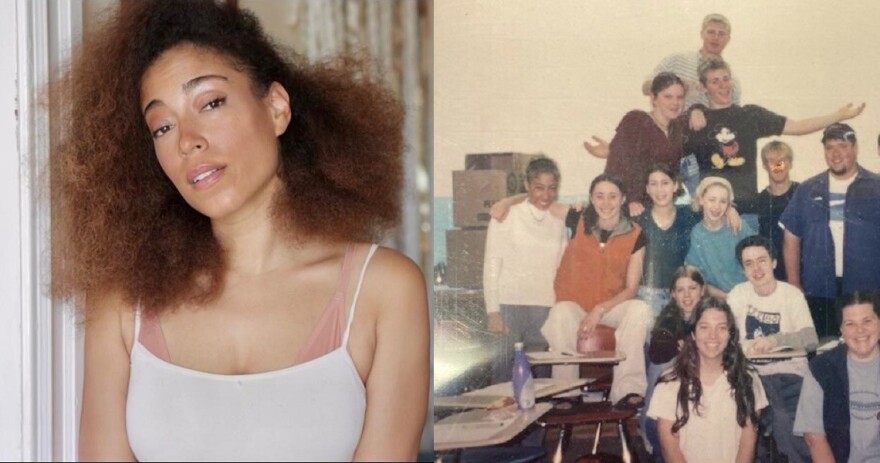This is the latest episode of Homegoings, a podcast that features fearless conversations about race, and YOU are welcome here. Follow the series here.
Loading...
Sign up for the Homegoings email newsletter for updates on new episodes, events and more. Sent every other week on Fridays.
It feels strange in 2024 to still be talking about people and their bloodlines. The gaze of it all comes from some pretty dark places; like the one-drop rule, a Jim Crow law born from the south, enforcing the idea that a single drop of "Black blood" makes a person a Black. It is also known as the "one Black ancestor rule." Some courts have called it the "traceable amount rule," and anthropologists call it the "hypodescent rule," meaning that Black and white biracial people are assigned the subordinate race, the Black race.
But we have to talk about this. It’s important stuff. That’s why we’re so grateful to Janice Solek-Tefft, who wrote into the show asking: “How do people who identify as Black but have a white parent identify with that part of them? What are the complicated issues, if any? How do you manage day to day?”
No human experience is a monolith, and how you look is just one piece of the nuanced biracial pie. What about how you were raised? How you’re treated?
We already know the answer to Janice’s question about how it feels to be biracial, specifically Black and white biracial, the struggles and how we manage day to day. The answer is – there is no answer. But there are stories.
In this episode we’ll speak with four biracial people about what it feels like to hold two of the world’s most opposing races in one body.
"I've always felt like I lived in between both worlds, though, I really try not to split it like this. Yeah, I try to split." - Hunter Paye
Sandra McCurdy
Sandra is an artist in Los Angeles, California. Her mother is Jamaican, her father is white. She says that she doesn’t connect with her whiteness as much because she was raised in a Black family.

Hunter Paye
Hunter lives in Bradford, Vermont, a state that is the second-whitest in the nation. He describes embracing his Blackness as a journey – a journey that took him a long time to begin.

Mattison
Mattison lives in Burlington, Vermont. She identifies as biracial Black, and for her the feeling of being split between two races is deeply felt.

Myra Flynn
(Hey that's me!) One of the things that hurt the most during this tender growing time, was this idea that biracial people like me, would grow up confused, and never truly settle into their identity. This stuck with me my whole life. Luckily, my Black mother reminded me of who I was and where I came from daily, at home.


Deep listen
Burning at Both Ends
by Hunter Paye
"[Burning at Both Ends] was written while my mother was dying at Dartmouth Hitchcock. It perfectly encapsulates not only everything that happened with the loss of my mother but the kind of the feeling a [person] of color has in this world." -Hunter Paye

Credits
This episode was reported and mixed by Myra Flynn, with help from associate producer James Stewart, and edited by Saidu Tejan-Thomas. The music was composed by Myra Flynn and Hunter Paye. All other music comes from Blue Dot Sessions. Elodie Reed is the graphic artist behind our Homegoings artist portraits.
Special thanks to Janice Solek-Tefft, Martha Mathis and Vermont Public data journalist Corey Dockser.
See you in two weeks for the next episode of Homegoings. As always, you are welcome here.
To continue to be part of the Homegoings family:
- Sign up for the Homegoings newsletter
- Write to us at: hey@homegoings.co
- Follow us on Instagram @wearehomegoings
- Make a gift to continue elevating BIPOC storytelling
- Tell your friends, your family or a stranger about the show!
- And of course, subscribe!
Loading...









